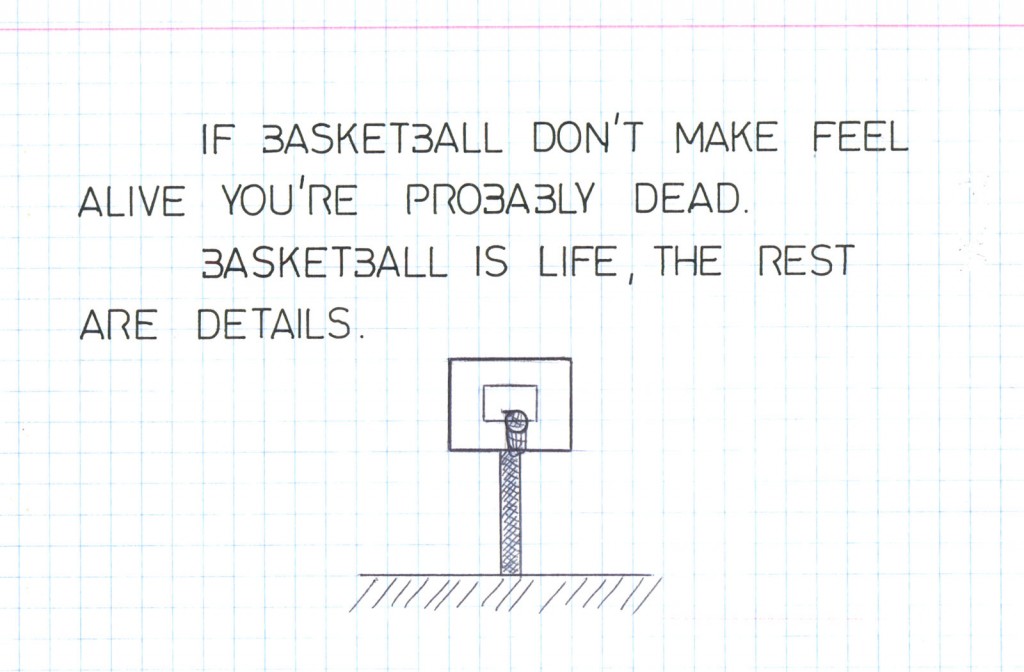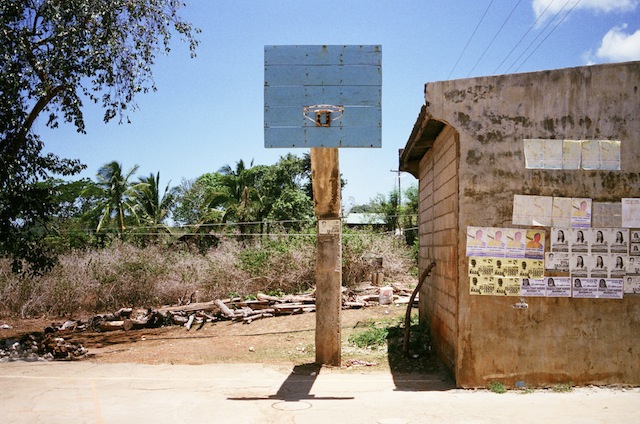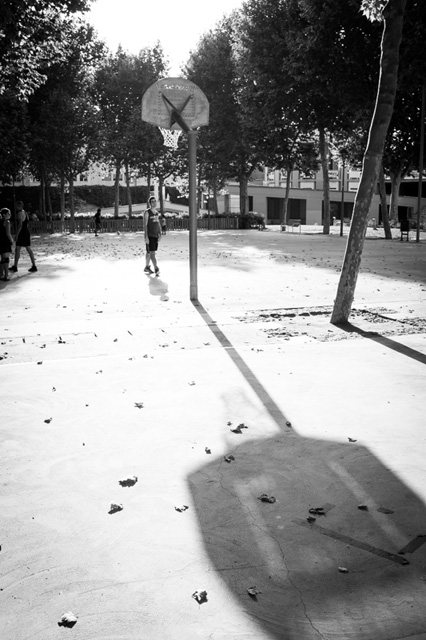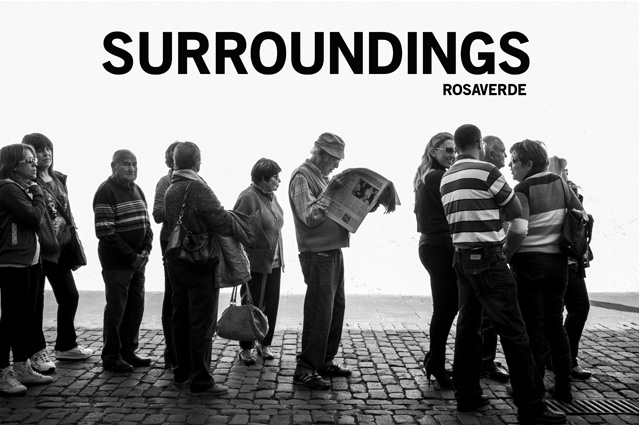7 basketball photo essays that I like
Hoop Dreams in Oaxaca’s Hills, Jorge Santiago
Lost Hoops by Adrian Skenderovic
Five versus five by David Schalliol.com
Somalia: Women Basketball by Jan Grarup
NY Basketball Courts by Charles Johnstone
It ain’t about the record, The Lady Jaguars
Hoops Spring Eternal, Larry Racioppo
Critical report: The process into “Surroundings”
The process into Surroundings. A first look at Street Photography.
I gave myself a month to choose a topic for the Re-think project (…).When the month came to an end, only one of those ideas seemed to have sticked… document my surroundings; try to explore the love/hate relationship I have with this place I was born in, and also, in a way, try to break with the stereotypes that the tourism industry uses to bring people to the island no matter what.
The re-think process started long before the topic was chosen. When one is given an assignment whose only headline is to challenge your way of approaching photography, finding the topic you wish to devote your obsessions to for the months to come, is a huge challenge in itself. At least, it was for me: I had harsh time.
In those days, I was avidly looking at Jocelyn Bain Hogg work, trying to figure out how and why his photographs managed to describe so well the British society.And,in doing so,I started to nurture the idea of trying something similar in my society:Tenerife, Canary Islands, Spain.
As a first stage in my research, I went out to nearby places that I don’t usually go to, armed with just the mobile phone camera. I instinctively started to take photos of things that were not beautiful, quite the opposite in fact. I now know that, I did it to quickly get away from the “all perfect” touristic selling image. But it turned out that I didn’t feel comfortable at all. I realised that I was going from one extreme to the other, and that neither of them showed the place as I feel it.
A month later, in December, I was already giving myself all sort of reasons to give up. I wrote:
I wanted to do a fair portrait of Tenerife through street photography. I now know that, considering the time and effort that takes to get one interesting image of street action, and having my time limited by a full time job, I would need a life time to put together a couple of dozens photos that I would be happy to call “a portrait”. So… I guess I should admit that my first attempt at this re-think project has not been very successful and I should start re-thinking again.
Patience is no one of my virtues. I need to see convincing results early in the process or I give up soon. And there I was, about to give up. But I didn’t; to be honest, mainly, because the other ideas I had in mind didn’t work out, but also, because Paul Lowe insisted in saying that I was doing well and that, in a way, my resistance to believe it and the urge to give up, were the best sign that I was really challenging myself and re-thinking a lot, which was the ultimate goal of this exercise.
It is at this point that I started to seriously consider constraining the idea to shooting just in my neighbourhood and a few other places I am very familiar with.
This was the beginning of the first conscious, and serious attempt to document my familiar surroundings with street photography as the only means.The first question was whether candid street life moments would give a real sense of the place. I had no other option but to assume/digest that only hard work and time, could provide an answer worth considering.
“a sense of the instantaneous as the corridor into a certain kind of truth.”
(Scott, C. 2007, p. 4)
But… what is street photography?
STREET PHOTOGRAPHY
Many (Nick Turpin, Eric Kim, …) define the term very nicely, addressing all its ambiguities: But the one definition I really like is that given by The London Festival of Photography:
“un-posed, un-staged photography which captures, explores or questions contemporary society and the relationships between individuals and their surroundings.”
STEPPING INTO THE STREETS
It took me years to get to talk to people in the streets and ask them for a photo. Coming from an extreme introversion, I would proudly share with everybody around me this new found capacity to use a smile to establish relationships that would give me much more than an occasional good portrait. I had said bye to the anxiety of trying to steal a photo, and it felt great. There I was, fully enjoying this climax of self confidence, when I decide to throw myself into becoming an invisible streets photographer in my own neighbourhood.
The camera I use has a direct consequence on my photography; and I am not taking here about the obvious quality of the image, but of a more subtle effect that it is often hard to admit: confidence grows with the size of the camera. In this paranoid world we live in, when I am shooting with my Nikon D3, people think (or rather, I think people think) I am shooting for the newspaper and that, solely, justifies the act of pointing my camera at whatever is happening.
Now, I place myself out there with a small camera, a Fuji X100, just a 35 mm lens, and, I not only want people in my shots, but I want them to talk to me nicely even if we don’t even share a look. Suddenly, I am back to the anxiety of not being sure if, despite the love I put on each one of my subjects, I am being fair with them. I become paranoid myself and, instead of invisible, I feel quite the opposite, the centre of all suspicious looks. Back to square one: use the smile to look, ask, thank…This, and the search for what constitutes a good moment, have been the two hardest, continuous battles I have been fighting day after day for weeks in the realisation of this experimental project.
BLACK AND WHITE
Half way through the project, as I was showing my first images, someone asked me: why black and white? I hated it that I had no immediate answer for that question. So I set myself the task to find out the reasons why I preferred black and white over colour for this project.
The first reason that I bumped into, was that, given the time constraints, I wanted to be able to shoot at any time of the day. And, in black and white, I find it much easier to play with silhouettes and strong shadows as compositional elements.
Colour mingles uninquisitively with life itself; black and white has the capacity to isolate the mystery which swirls unseen around us.
(Scott, C. 2007, p. 59)
Also, history of street photography, although not consciously, had a lot to do with this decision of using black and white. When we say “street photography”, our mind quickly brings back the classic images of Henry Cartier-Bresson, Robert Doisneau,Winogrand, etc.A timeless look, an emphasis on drama…
James Masher, in Eric Kim’s blog, explains it this way:
- Without any colour, every area of a photograph starts on an even plane for the eye and so it makes forms, shapes, lines and contrast much more prominent and important.
- Figures can look more powerful and more dramatic. Faces and expressions are emphasized more.
- Blur and grain look much more pleasing in black and white. If you have a lot of colour noise from shooting at a high ISO, then converting to black and white will fix this.
- Since a majority of old photography was done in black and white, it can help a modern moment feel classic and timeless.
- Photographs can seem more serious or sometimes more thoughtful.
THE STORY
Another thing that worried me a lot along the process was that I did not have a story line, nor something specific that I would go out to search for. But after a while, two things happened: on one hand, I started to see connections between my photos. Even without looking for it, some of them, when put together, somehow seem to shared a narrative. I guess that has to do with a way of seeing. There must be a reason behind what calls my attention, and that reason, whatever it might be, establishes connecting points.On the other hand, I found plenty of justifications not to consciously look for a preconceived, planned, story line.
Walking the streets releases the walker from the obligations of narrative, the need to get from here to there. Words and images are free to inhabit the mind, the eye, without their being appropriated to serve al ulterior purpose. The observations of the interior monologuist, like the images of the street photographer, have no debts to finality, can be made of pure contingency, are the point of intersection of the street’s temporalities and the inner time of the monologuist/photographer.
(Scott, C. 2007, p. 41)
EXPECTATIONS
And then comes the expectations. To learn, one needs to go to the masters. The problem is that, looking at their photographs, although we know we are looking at the result of many years of effort, we rarely ever think of the hard work put into the process. And, without that long term perspective, is easy to get discouraged thinking that we are never going to be able to take a single photo up to that standard. I do suffer from that illness but, looking at the “hit rate” of the masters (Robert Frank chose 83 images out of the 27,000 exposures he shot for his seminal book,The Americans, a mere 0.3% hit rate), I reassure myself: keep walking, keep looking, keep thinking, keep shooting… enjoy! The time will come when you’ll feel proud of your work. My mantra these days.
SOME CONCLUSIONS
I now present the results of a few months walking the streets with my Fuji X100, and I have little certainties but a few last minute thoughts:
To me, the continuous practice of this kind of photography has felt like some kind of meditation that lets my instincts out. Not all the time, of course, but often. There are no creative constraints and the reasons why one chooses to convert an, a priori, banal instant into a significant moment, in my opinion, talks about the inner self like no other language.
Apart from that, finding a style, or even detecting influences from the many authors I have looked at, it’s matter of time; a long journey I have just started. And right now, with the images so present in my head, I cannot really extract many more conclusions from looking at them once again. So… I leave you with the images.
Whether or not the set of photos in Surroundings meet the goal initially set, is for the viewer to judge. I can only hope that you enjoy looking at them, at least as much as I have enjoyed the whole process right up to this last full stop.
BIBLIOGRAPHY
Scott, C. (2007). Street Photography. From Atget to Cartier-Bresson. I.B.Tauris: & Co. Ltd:. London. Doisneau, R. (2005). Doisneau París. Lunwerg: Paris.
Henri Cartier-Bresson. (2003). Henri Cartier-Bresson. ¿De quién se trata?.Lunwerg: Milan.
Henri Cartier-Bresson. (1999). The mind’s eye. Aperture.
STREET PHOTOGRAPHY LINKS
http://erickimphotography.com/blog/
http://www.burnmyeye.org
http://www.in-public.com
http://blog.leica-camera.com
http://streetreverbmagazine.com
Easter time
Easter in Spain is a very visual time of the year. For that reason, many of us who like to go out in the hunt for photos, usually have really high expectations on capturing “the photo”. As for me, every year I struggle to find a way of expressing through my images how I feel about this religious event.
This year, easter caught me right in the middle of my street photography research process. And this is what happened:
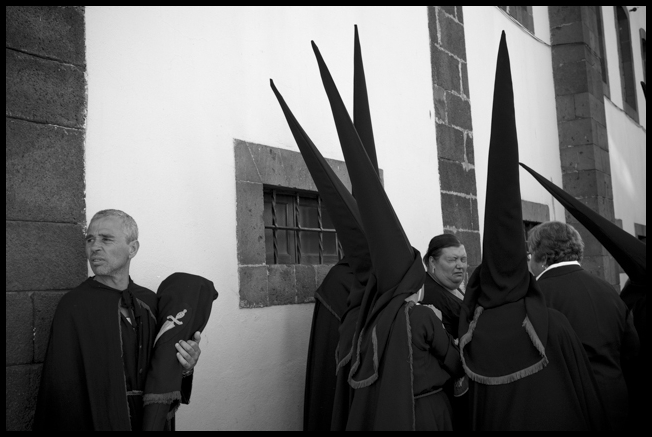

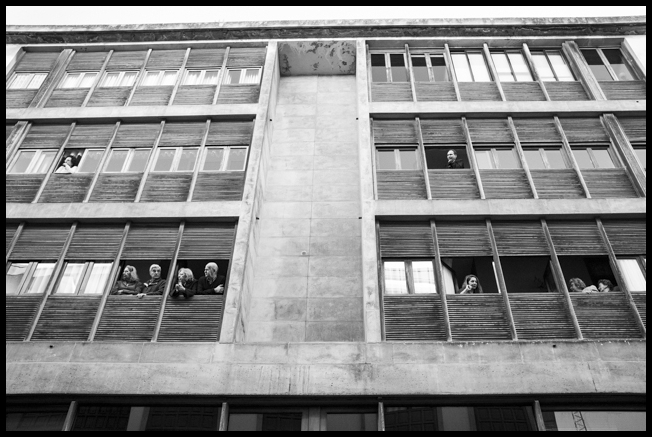
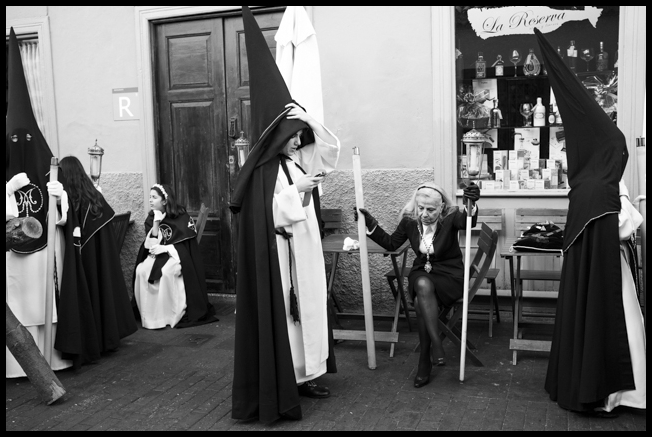
Re-thinking IV
I’ve been convinced!
I should keep going for exactly the same reasons I wanted to give up: it’s hard, very demanding and I have no idea where it is taking me, if anywhere. Sure I am learning, and I guess that’s the whole point of this re-think exercise.
So, here I am, having huge problems deciding what’s a good street photo and what’s not, and learning first hand why streets photographers always say that the most important thing to go into this type of photography is to have a good pair of shoes.
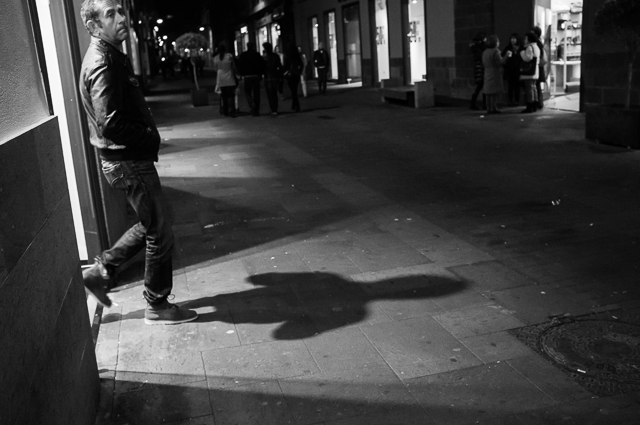
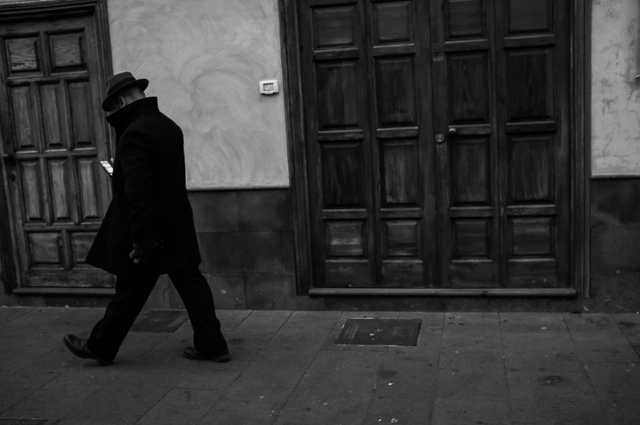
Fun fair
There is something extremely sad about these “fun places”… I must photographically explore this sadness at some point.
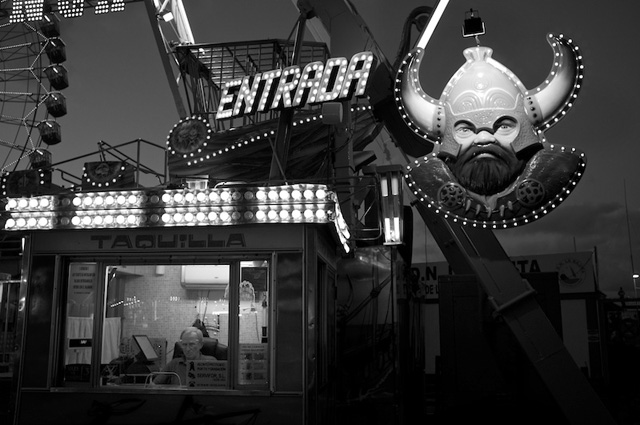
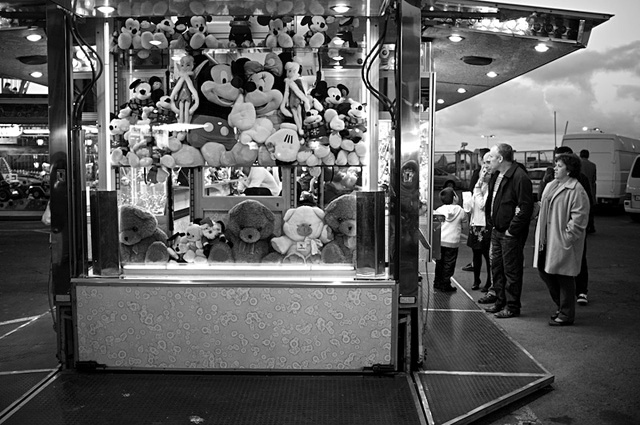
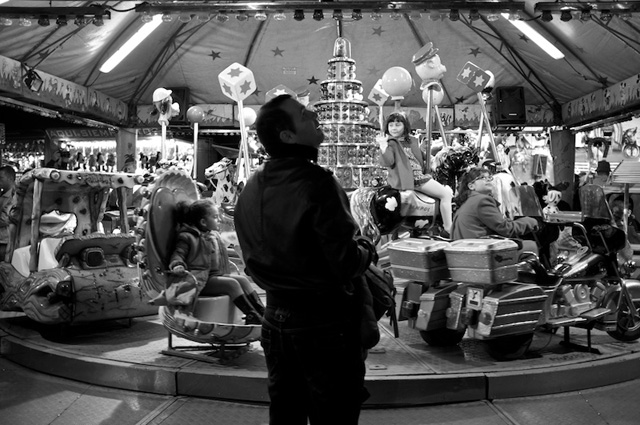
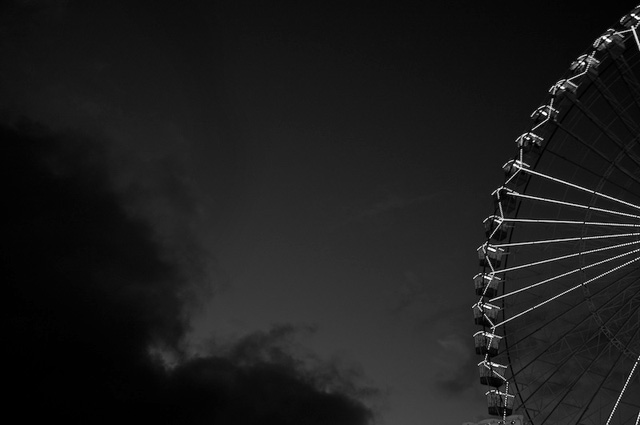
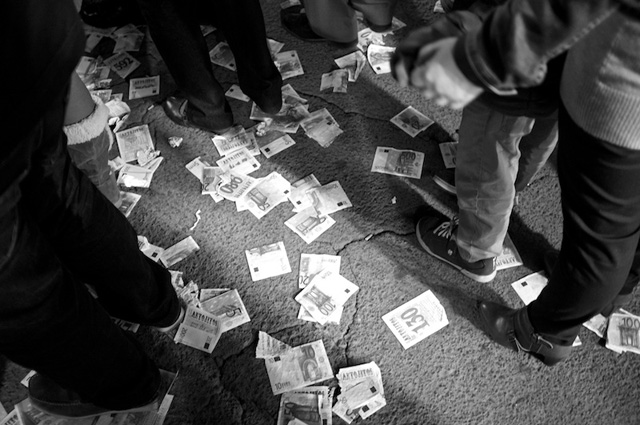
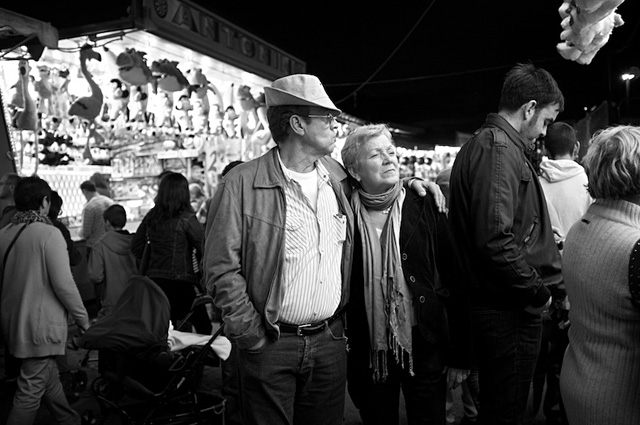
Re-thinking (III)
So, what’s happening after that first failed attempt?.
Right now I am trying to get access to a place where they hardly ever allow anyone from outside their community. It’s one those places I have always wanted to know more about. It’s difficult, and Christmas time is not helping to get things done, but if I get that permission, I will soon have something interesting to show. If doesn’t work out, my panic alarms will set off loudly. For now, I just keep my fingers crossed!
In the mean time, I am spending 90% of my MA time working on the theory/research project. I know that it is a lot of time for something that is worth much less than the other part but… how am I suppose to write 2500 words on something I know (knew) close to nothing if I don’t give it that much reading time?
I decided early on that Vietnam was not going to be my research topic. It’s hard to spend months researching on something I have no interest in nor any personal conection with. So, instead, as I had just come back from Nicaragua and I was reading Gioconda Belli’s “The Country Under My Skin”, I chose to do something on the Nicaragua’s Revolution.
I have been reading a lot about poetry and revolution and looking at photos such as Susan Meiselas’. I have even had the chance to exchange a few emails with Lou Dematteis, the photographer who in 1986 took the famous photo of downed U.S. soldier Eugene Hasenfus.
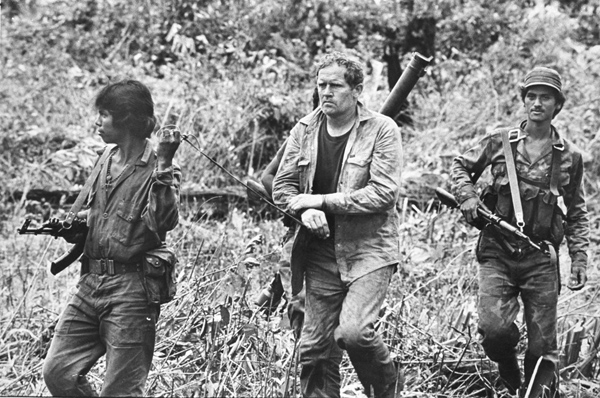
Photo by Lou Dematteis
I am enjoying the process and it’s getting more and more interested as I read, however, at the same time, it becomes harder and harder to have in mind two different research projects at the same time. That’s why at some point I thought that perhaps I could do both projects on topics related to Nicaragua. For that reason, I have been trying to get in touch with Nicaraguan’s living in Tenerife hoping to find some powerful personal stories.
But so far, the interesting part of this search in that, altough there is a Consulate of Nicaragua in the island, there doesn’t seem to be any Nicaraguans living here. At least, the Consulate people don’t know anyone and, the people keeping track of inmigrants’ associations in Tenerife, have no registry of any association of Nicaraguans. They said that there are associations of most South and Central American countries, but none of Nicaragua. I’ll keep working on that.
Another thing that is happening is that, having been twice to Nicaragua in the last three years, it’s only now that I am getting to understand their history and struggle to become what they are today. And, as a consequence, some of the images I took there, have acquired a completely different meaning to me.
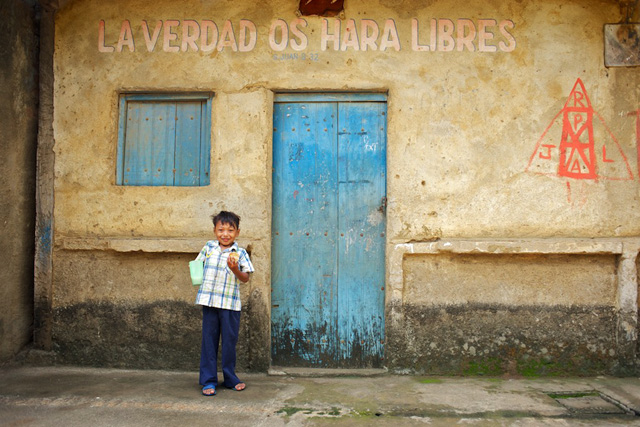
I would have so many questions to ask the people there now. Hector, I am thinking of you and your quietness, so many things I could had asked. But I’ll be back, I am sure.
I will be back!
Re-thinking (II)
I am not taking photos.
I keep telling myself that this drought I am going through will probably (hopefully) make me a better photographer with time, but the reality right now is that I am suffering a complete lost of confidence in my ability to compose an interesting story.
I started the term fairly happy with what I had done in the first part of the course, and I had quite a few new ideas to start working on. Time has gone fast and I am now thinking that, of all those ideas, I problably chose the more demending one and I have not been able to cope with my own expectations.
I wanted to do a fair portrait of Tenerife through street photography. I now know that, considering the time and effort that takes to get one interesting image of street action, and having my time limited by a full time job, I would need a life time to put together a couple of dozens photos that I would be happy to call “a portrait”.
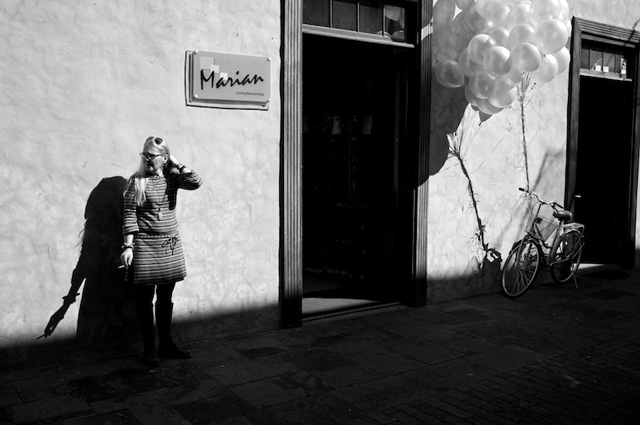
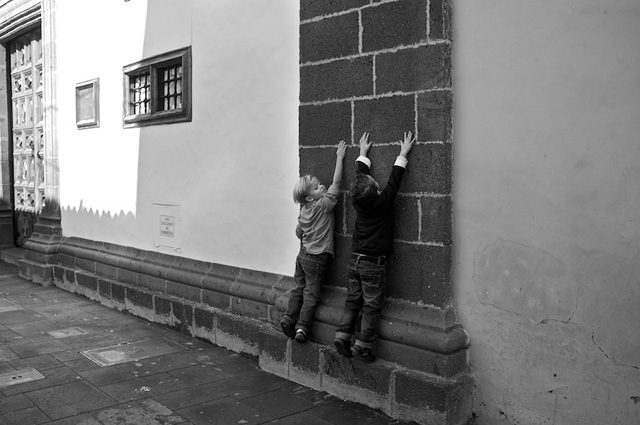
So… I guess I should admit that my first attempt at this re-think project has not been very sucessful and I should start re-thinking again.
In an attempt to get out of my confort zone, that is, shooting with my Nikon D3, I borrowed a medium format camera. I absolutely loved to work with it, at least until I got to the developing phase. Apart from being very expensive and messy, the lab I took them to, gave me back 2:1 crops of my square photos. “In case you want to print them in 10x15cm” – they said. At that point my encouragement to try film cameras had reached very low levels.
I have also been shooting with a Fuji X100. I have no more to say than I am slowly learning to love it.
